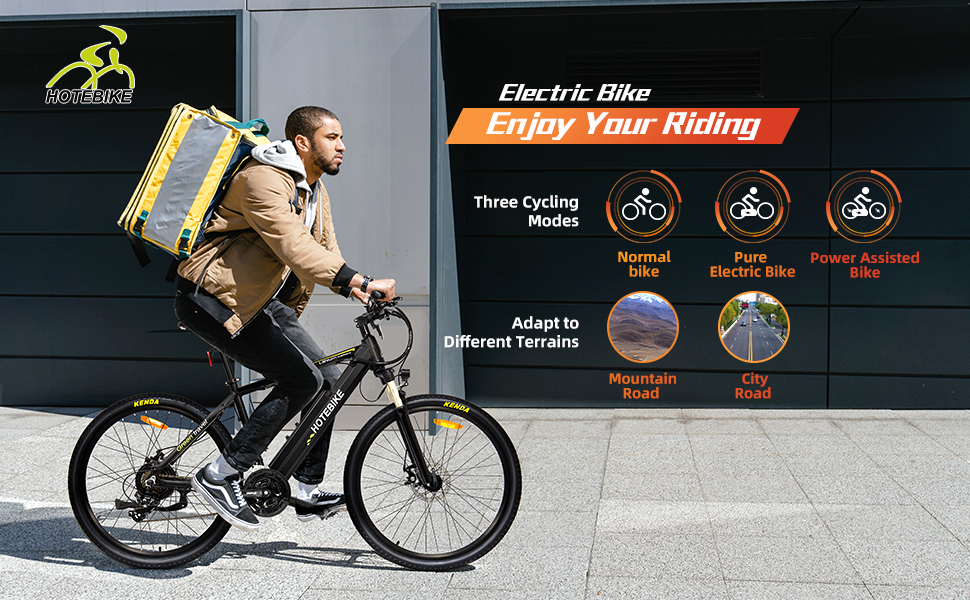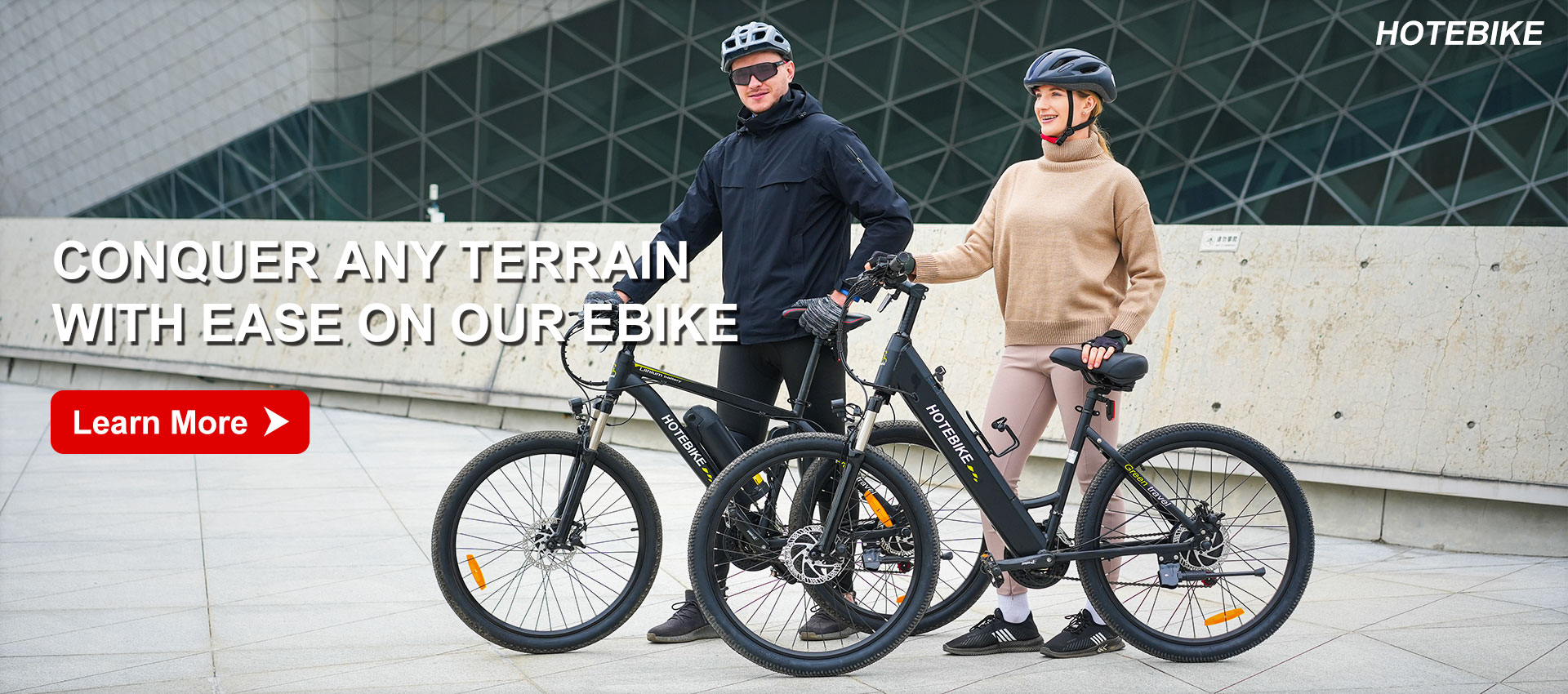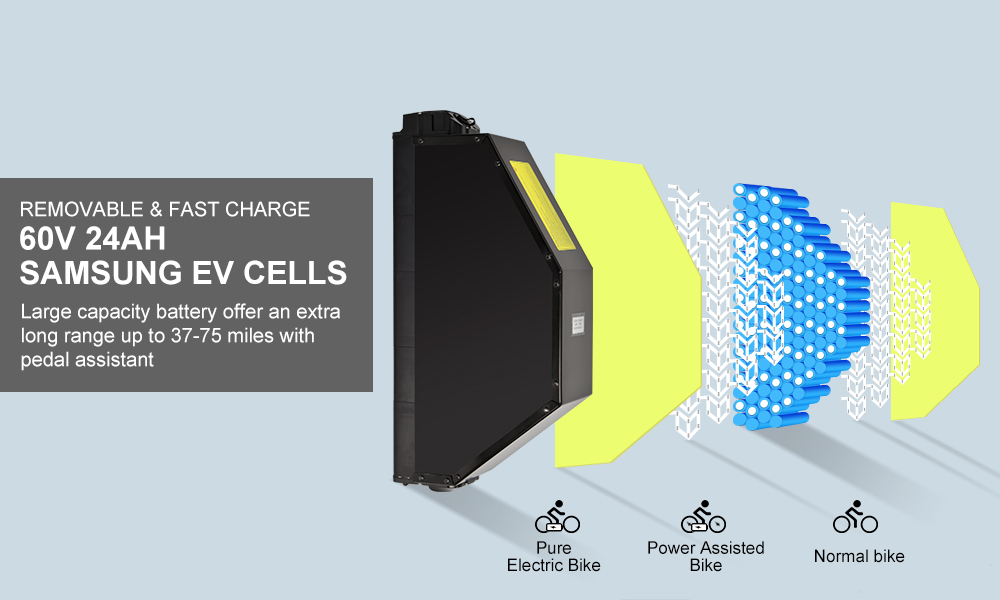Guide to Choosing an Electric Bike–With the rise of technology, e-bike manufacturers continue to introduce new models of e-bikes every day. With so many different features, configurations and prices available, making the best buying decision does require some thoughtful analysis.

The future has only become clearer with the introduction of the electric bike, which solves most of the problems surrounding traditional bicycles. If you’ve tried an electric bike before, I bet you can tell what it feels like. Pretty amazing, right? Thanks to technology, your two-wheeled machine gets to accomplish far more than it normally would. The ease of use and comfort that comes with an electric bike is unimaginable.
If you walk into a bike warehouse without the right information, it’s not hard to get confused. You’ll likely choose the most attractive looking bike, even though it may not be the best choice for your use and situation.
Electric bikes come in a wide range of styles and configurations. If you are thinking about getting an electric bike, there are a few things you must consider first.
Understanding the Three Classes of Electric Bikes
Figuring out what type of e-bike you need is a key decision point.
1.Class
Class 1: Class 1 bikes have a top speed of 20 mph and power is provided only through pedal assist. This means that the motor will only turn on when you pedal the bike.
Class 2: Class 2 bikes also have a top speed of 20 mph. But in addition to pedal assist, they are equipped with a throttle that allows you to propel the bike forward with the touch of a button.
Class 3: Class 3 bikes have a top speed of 28 mph and no throttle.
It’s worth noting that the class of bike also determines where you can ride. class 3 bikes are the most powerful, but they aren’t always allowed on bike lanes.
Most new riders start with a Class 1 e-bike. Class 1 bikes are the most affordable and, from a regulatory standpoint, the most universally accepted. You can ride them on city streets and many bike trails. This type of e-bike is starting to be allowed on traditional mountain bike trails, but it’s not universally accepted, so be sure to check first.
Class 2 e-bikes are usually allowed in the same places as Class I e-bikes. This is because the maximum speed for both types of e-bikes is 20 mph.
Class 3 e-bikes are popular with commuters and errand runners. They are faster and more powerful (and more expensive) than Type 1 bikes. The payoff for increased performance is that you can keep up with traffic better. They can also climb hills better and handle heavier loads. The trade-off is that they cannot be ridden on most bike trails or mountain bike trail systems.
So research local rules of the road before making your final choice of e-bike class.
Type of Bike

Electric bicycles are also classified according to their overall design and adaptability to different terrains. While specific names vary by manufacturer, most e-bikes fall into one of the following four categories:
Road bikes: These bikes are designed for use in urban areas. They are not suitable for going off-road, but they are light and easy to handle. They are also the cheapest option.
Mountain bikes: These bikes are designed for rough terrain. They are more versatile and have better suspension. The downside is that they are heavier and tend to be more expensive.
Hybrid bikes: Hybrid bikes are for urban and off-road riders. They are usually lighter than mountain bikes, but still suitable for rough terrain.
Folding bikes: Many e-bikes are designed to fold and be taken on trains/into apartments. They are ideal for commuting, but usually have smaller batteries.
Urban e-bikes :for routes mainly around the city and for shopping
Travel e-bikes:for road and gravel road trips
Off-road electric bikes:over mountains and mines – also off asphalt
Get to know E-Bike Components
E-Bike Motor Location
Mid-drive motors are on the bottom bracket (the place where the crank arms attach to the bike frame). Hub-drive motors sit inside the hub of the rear wheel (some are on the front wheel).
Mid-drive motors: Many motors feature this setup, for a variety of reasons. The pedal assist responds with a natural feel, and having the weight of the motor centered and low helps keep the ride balanced and stable.
Hub-drive motors: Rear-wheel hub-drive motors send pedal power straight to the rear wheel, giving you a feeling of being pushed along. Note that changing a flat on the wheel where the hub drive is mounted can be more complex than changing a flat on a standard (or mid-drive) bike. Front-hub drive motors handle somewhat like front-wheel drive cars; they also allow a standard bike drivetrain to be used on the rear of the bike.
About Battery

The capacity of the battery determines the range of the e-bike, so the calculation is simple – the higher the capacity, the more miles the power will support. Depending on the battery capacity, it is easy to compare different brands of bikes and choose the one that best suits your needs. Most brands specify battery capacity in kilometers, but various factors such as tire pressure, steep roads, weight of the bike, speed, etc. can affect performance. Typically, bikes with LCD displays will show the latest mileage. Battery capacity is usually measured in watt-hours, which is the voltage of the battery multiplied by the ampere-hours of the battery.
Battery charging time: Most batteries take three to five hours to fully charge from empty, with larger capacity batteries taking longer. If you plan to commute to work on an e-bike, you can buy extra chargers (or carry them along). Number of batteries: Some e-bikes allow cyclists to use two batteries at the same time. This can extend your ride time, and if one battery dies, you have a backup battery. You can also buy extra batteries to keep them fully charged at all times, or replace them at the end of their useful life (usually for thousands of charges).
Types of batteries
Lithium Ion: All of our bikes have Lithium batteries. We don’t recommend anything else. You will see anywhere from generic batteries (if a brands site does not indicate a brand, it’s generic) to name brand. Every bike line we sell as at least name brand cells in it. Most have name brand batteries. If a bike doesn’t at least list what cells or battery it is, it’s a generic.
Power
Electric bike motors range in size, typically from 250 to 750 watts. 250-watt bikes are the most popular because, along with being affordable, they offer more than enough power for flat surfaces and small hills. They also allow you to maximize your battery range.
If you’d like to spend more, however, a higher wattage will provide better acceleration and additional assistance while riding up steep hills.
Your E-bike Motor Torque
The value of your motor Torque is an important factor when checking the effectiveness of your ride on hills and/or with heavy loads. It’s a value measured in newton meters (Nm), and it has a maximum of 80 N m and a minimum of 40 Nm. Whenever you ride, your torque will vary over time as the pedal-assist settings vary.
Check the type of brakes
E-bikes can be quite a considerable weight (17 to 25 kg) and achieve high speeds. That means excellent quality brakes are a must, with the safest brakes are hydraulic brakes.
You could also go for a motor brake: this system recovers the energy when you brake to recharge the battery. These electric bikes are much faster, so it’s vital that you wear the appropriate protective gear.
Other key components
Of course, your electric bike is more than just its motor and battery. Here are some more details to consider when comparing e-bikes:
Pedal assist activation and pedal feel: The more performance-oriented a bike is, the smoother and more responsive its pedal assist will feel. Test ride several bikes to find one that responds at the speed and intensity that best suits your needs.
Pedal assist levels: Most bikes offer 3 or 4 levels of assist, allowing you to retain battery power (in eco mode) or summon more speed and torque (in turbo or supercharged mode).
Lighting: Most common on city and commuter bikes, this is a nice safety feature. Systems vary, with higher-end bikes having more powerful lighting.
Handlebar-mounted LCD: There’s a lot to do on an e-bike, so it helps to have a handlebar-mounted bike computer that allows you to monitor battery life, pedal assist mode, ride range, speed, etc.
Frame: Most e-bike frames are made of aluminum, although a variety of frame options (from carbon fiber to steel) are becoming available. Frame material and design, as well as the size of the motor and battery, are the biggest factors affecting total weight. Generally speaking, e-bikes are heavier than regular bikes, overcoming sluggishness through motor assistance. However, a lighter bike will still feel more nimble. So if you’re choosing between two comparable bikes, the lighter model will likely offer a better ride.
Conclusion
Electric bikes are becoming increasingly popular. They look and feel just like traditional bicycles, but they have a built-in motor that propels you forward as you pedal, making them a popular choice for recreation and commuting.
As soon as you’re able to figure out these key things, you’d be able to have a mental picture of the type of functionality you want in your electric bike. This will no doubt ease the selection process and take you steps closer to making only the best choices of E-bikes.
 hotebike
hotebike